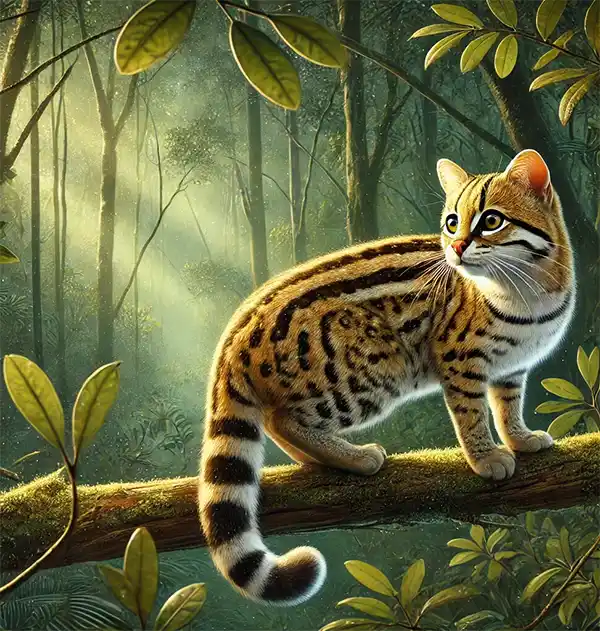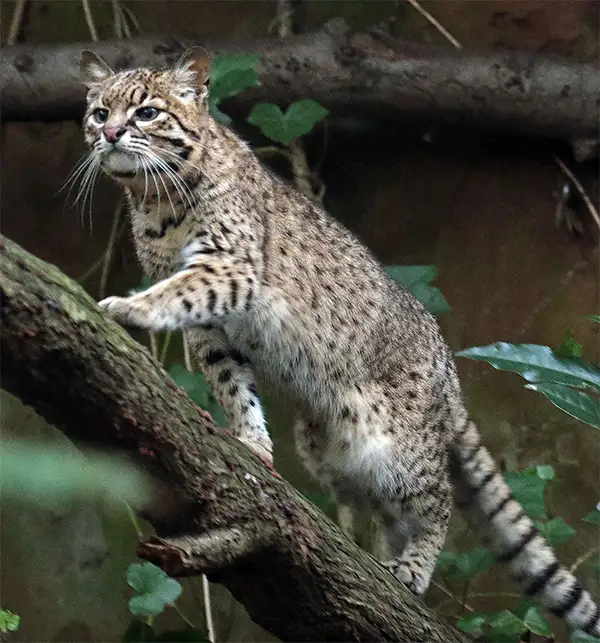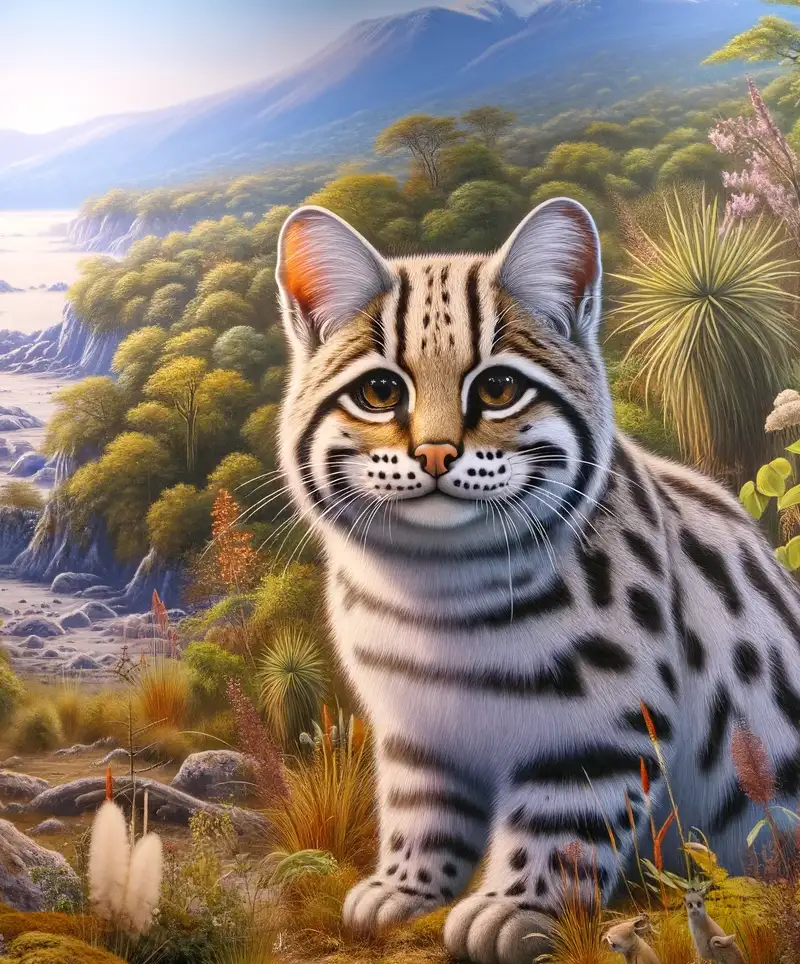 The Smallest Big Deal in the Feline World
The Smallest Big Deal in the Feline World
Every year on January 28th, cat enthusiasts, wildlife lovers, and conservationists come together to celebrate World Geoffroy’s Cat Day. This day shines a spotlight on one of the lesser-known but utterly fascinating wild cats of South America. If you’ve never heard of Geoffroy’s cat (Leopardus geoffroyi), prepare to meet a small but mighty feline whose charisma is rivaled only by its diminutive size.
Who Is Geoffroy’s Cat?
Native to the grasslands, scrublands, and forests of southern and central South America, Geoffroy’s cat is a master of adaptability. Named after the French naturalist Étienne Geoffroy Saint-Hilaire, this pint-sized predator is one of the smallest wild cats in the world. Adult Geoffroy’s cats typically weigh between 4 and 8 pounds—roughly the size of an average house cat but with the heart of a lion. Think of them as the Napoleon Bonapartes of the feline world—small in stature but commanding in presence.
These felines boast a striking spotted coat that serves as perfect camouflage in their natural habitats. Their fur can range from golden yellow to silver-gray, adorned with black spots and stripes, making them the fashionistas of the feline kingdom. It’s as if they walked out of a designer showroom, ready to stalk their prey and maybe a red carpet or two.
Their large, piercing eyes aren’t just for show either—these are night-vision goggles on steroids, allowing them to thrive as nocturnal hunters. Despite their fierce demeanor, they manage to exude an air of sophistication, as if they’re saying, “I could hunt you, but I won’t... unless I’m hungry.”
Geoffroy’s cats may be solitary creatures, but they leave quite an impression wherever they roam. They’re like the introverts of the animal kingdom: quiet, self-sufficient, and a little mysterious, but endlessly fascinating once you get to know them. If you’re lucky enough to spot one in the wild, consider yourself blessed—and maybe a little judged by their intense gaze.
A Day in the Life of Geoffroy’s Cat
Don’t let their small size fool you; Geoffroy’s cats are accomplished hunters. They primarily feast on small mammals, birds, and reptiles, but they’re not above snacking on frogs or insects if the opportunity arises. These nocturnal creatures spend their nights prowling their territories with the stealth and precision of a ninja. During the day, they’re all about that beauty sleep, lounging in dense vegetation or tree hollows.
Geoffroy’s cats are solitary by nature, and they’re fiercely territorial. Their communication consists of a repertoire of growls, hisses, and the occasional chirp—a sound that’s as adorable as it is surprising coming from a wild cat.
Conservation Status: Small Cat, Big Challenges
Despite their adaptability, Geoffroy’s cats face numerous threats in the wild. Habitat loss due to agriculture and urbanization, along with hunting for their fur, has put pressure on their populations. While the International Union for Conservation of Nature (IUCN) currently lists them as of “Least Concern,” localized declines in certain regions are a cause for concern.
 One of the primary challenges is the fragmentation of their natural habitats. Expanding farmlands and human settlements have carved up their territories, making it harder for these cats to find mates, hunt, and establish secure ranges. Additionally, conflicts with humans often arise when Geoffroy’s cats prey on domestic poultry, leading to retaliatory killings.
One of the primary challenges is the fragmentation of their natural habitats. Expanding farmlands and human settlements have carved up their territories, making it harder for these cats to find mates, hunt, and establish secure ranges. Additionally, conflicts with humans often arise when Geoffroy’s cats prey on domestic poultry, leading to retaliatory killings.
Poaching for their beautiful spotted coats remains a significant problem in some areas, despite international regulations banning the trade of Geoffroy’s cat pelts. The illegal pet trade also poses a threat, as some people capture these wild cats for exotic pet collections, depriving them of their natural habitats and exposing them to improper care.
Conservation efforts are crucial to ensuring the survival of Geoffroy’s cats. Organizations working in South America are focusing on habitat restoration, creating wildlife corridors to reconnect fragmented territories, and educating local communities about the ecological importance of these small predators. These programs aim to reduce human-wildlife conflict and foster coexistence.
World Geoffroy’s Cat Day highlights the importance of these initiatives, emphasizing that protecting Geoffroy’s cats is not just about saving a species but also about preserving the health and balance of their ecosystems.
Fun Facts About Geoffroy’s Cat
Geoffroy’s cats might not be the headline stars of the animal kingdom, but they’re full of surprises that make them endlessly fascinating. Here are some tidbits that highlight just how unique these small but mighty felines truly are:
- Tree Huggers Extraordinaire: Geoffroy’s cats are excellent climbers and often take to the trees to rest or escape predators.
- Water Lovers: Unlike most felines, these cats don’t mind getting their paws wet and are known to hunt aquatic prey like fish and frogs.
- Superstitious Spotting: In some South American cultures, Geoffroy’s cats are believed to have mystical powers. This, unfortunately, has also made them targets of superstition.
- Mini Acrobatics: Their agility rivals that of much larger cats. They can leap great distances and navigate complex terrains with ease.
How to Celebrate World Geoffroy’s Cat Day
World Geoffroy’s Cat Day is a perfect opportunity to appreciate these lesser-known wild cats and contribute to their preservation. Whether you’re a wildlife enthusiast or simply a cat lover, there are many fun and meaningful ways to get involved:
- Learn and Share: Take a moment to educate yourself and others about these incredible cats. Share their story on social media using #WorldGeoffroysCatDay.
- Support Conservation: Donate to organizations dedicated to protecting Geoffroy’s cats and their habitats, such as the Small Wild Cat Conservation Foundation.
- Adopt a Wild Cat (Symbolically): Many wildlife organizations offer symbolic adoptions that help fund conservation efforts. Plus, who wouldn’t want to brag about their very own Geoffroy’s cat?
- Get Creative: Paint, write, or even bake in honor of this special day. Geoffroy’s cat cookies, anyone?
Why They Deserve the Spotlight
In a world that often overlooks the underdog (or undercat), Geoffroy’s cat is a reminder that size doesn’t determine importance. These tiny predators are vital to their ecosystems, controlling populations of small prey and contributing to the biodiversity of their regions.
So this January 28th, let’s raise a toast to Geoffroy’s cat. They may not roar like lions or prowl as prominently as leopards, but they’re every bit as deserving of our admiration. Plus, who wouldn’t love a cat that’s small enough to fit in your lap but fierce enough to rule the grasslands?
Please Share our Content






 The Smallest Big Deal in the Feline World
The Smallest Big Deal in the Feline World One of the primary challenges is the fragmentation of their natural habitats. Expanding farmlands and human settlements have carved up their territories, making it harder for these cats to find mates, hunt, and establish secure ranges. Additionally, conflicts with humans often arise when Geoffroy’s cats prey on domestic poultry, leading to retaliatory killings.
One of the primary challenges is the fragmentation of their natural habitats. Expanding farmlands and human settlements have carved up their territories, making it harder for these cats to find mates, hunt, and establish secure ranges. Additionally, conflicts with humans often arise when Geoffroy’s cats prey on domestic poultry, leading to retaliatory killings.








 "Sláinte!" is a traditional Irish expression used as a toast, equivalent to "Cheers!" in English.
"Sláinte!" is a traditional Irish expression used as a toast, equivalent to "Cheers!" in English.